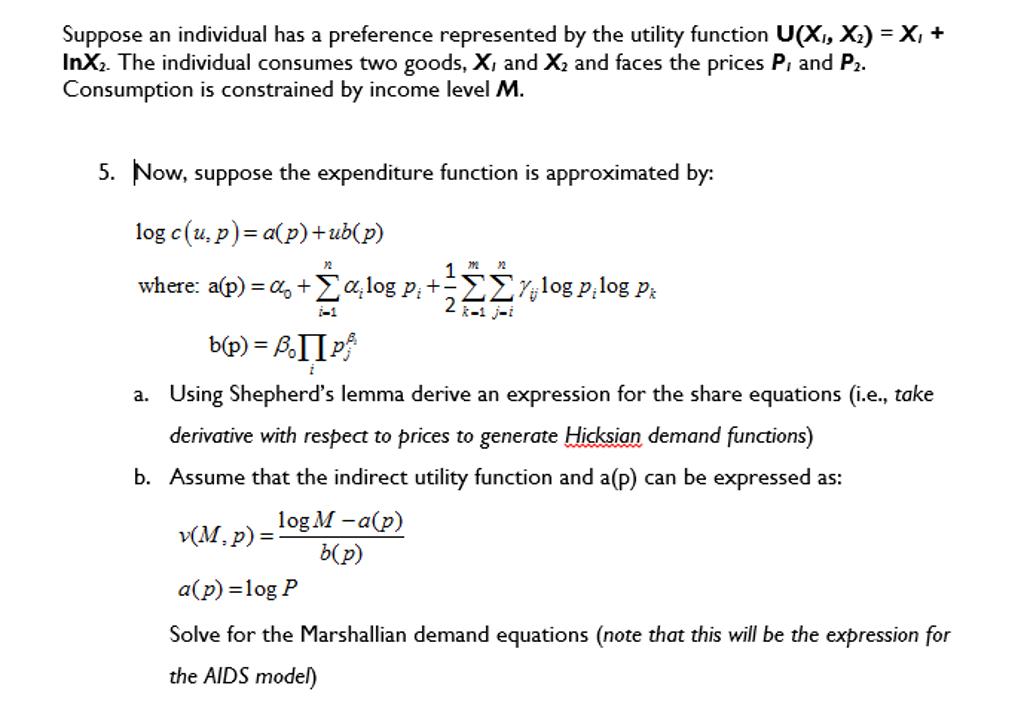Question
Suppose an individual has a preference represented by the utility function U(X, X) = X + InX. The individual consumes two goods, X, and

Suppose an individual has a preference represented by the utility function U(X, X) = X + InX. The individual consumes two goods, X, and X and faces the prices P, and P2. Consumption is constrained by income level M. 5. Now, suppose the expenditure function is approximated by: log c(u, p)= a(p) + ub(p) 1 m where: a(p) = a + alog p + Zlog pilog P Pi 2 k-1 j-i 22 b(p) = P.P i v(M, p) = a. Using Shepherd's lemma derive an expression for the share equations (i.e., take derivative with respect to prices to generate Hicksian demand functions) b. Assume that the indirect utility function and a(p) can be expressed as: 22 log M-a(p) b(p) a(p) = log P Solve for the Marshallian demand equations (note that this will be the expression for the AIDS model)
Step by Step Solution
3.51 Rating (158 Votes )
There are 3 Steps involved in it
Step: 1

Get Instant Access to Expert-Tailored Solutions
See step-by-step solutions with expert insights and AI powered tools for academic success
Step: 2

Step: 3

Ace Your Homework with AI
Get the answers you need in no time with our AI-driven, step-by-step assistance
Get StartedRecommended Textbook for
Intermediate Microeconomics
Authors: Hal R. Varian
9th edition
978-0393123975, 393123979, 393123960, 978-0393919677, 393919676, 978-0393123968
Students also viewed these Economics questions
Question
Answered: 1 week ago
Question
Answered: 1 week ago
Question
Answered: 1 week ago
Question
Answered: 1 week ago
Question
Answered: 1 week ago
Question
Answered: 1 week ago
Question
Answered: 1 week ago
Question
Answered: 1 week ago
Question
Answered: 1 week ago
Question
Answered: 1 week ago
Question
Answered: 1 week ago
Question
Answered: 1 week ago
Question
Answered: 1 week ago
Question
Answered: 1 week ago
Question
Answered: 1 week ago
Question
Answered: 1 week ago
Question
Answered: 1 week ago
Question
Answered: 1 week ago
Question
Answered: 1 week ago
Question
Answered: 1 week ago
View Answer in SolutionInn App



